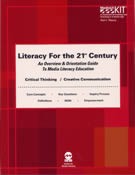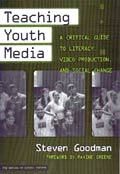What is Media Literacy? A Definition...and More.
CML's definition focuses media literacy as education for 21st century.
The definition most often cited in the US is a succinct sentence hammered out by participants at the 1992 Aspen Media Literacy Leadership Institute:
… the ability to access, analyze, evaluate and create media in a variety of forms.
Definitions, however, evolve over time and a more robust definition is now needed to situate media literacy in the context of its importance for the education of students in a 21st century media culture. CML uses this expanded definition:
• Media Literacy is a 21st century approach to education.
• It provides a framework to access, analyze, evaluate and create messages in a variety of forms - from print to video to the Internet.
• Media literacy builds an understanding of the role of media in society as well as essential skills of inquiry and self-expression necessary for citizens of a democracy.
What is important to understand is that media literacy is not about "protecting" kids from unwanted messages. Although some groups urge families to just turn the TV off, the fact is, media are so ingrained in our cultural milieu that even if you turn off the set, you still cannot escape today's media culture. Media no longer just influence our culture. They ARE our culture.
Media literacy, therefore, is about helping students become competent, critical and literate in all media forms so that they control the interpretation of what they see or hear rather than letting the interpretation control them.
To become media literate is not to memorize facts or statistics about the media, but rather to learn to raise the right questions about what you are watching, reading or listening to. Len Masterman, the acclaimed author of Teaching the Media, calls it "critical autonomy" or the ability to think for oneself.
Without this fundamental ability, an individual cannot have full dignity as a human person or exercise citizenship in a democratic society where to be a citizen is to both understand and contribute to the debates of the time.
from Literacy in a Media Age: An Overview and Orientation Guide to Media LIteracy Education





